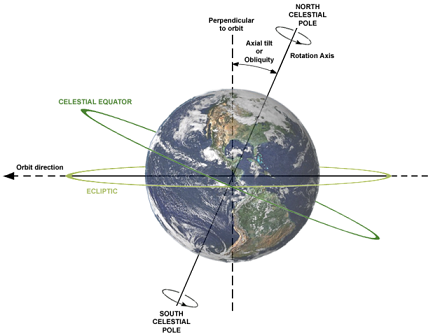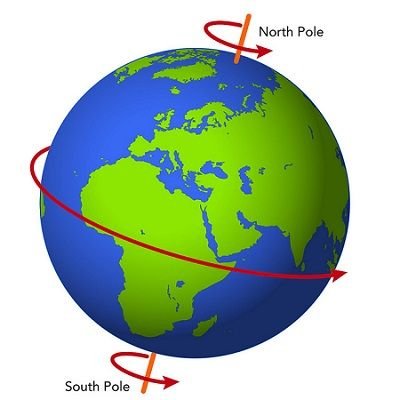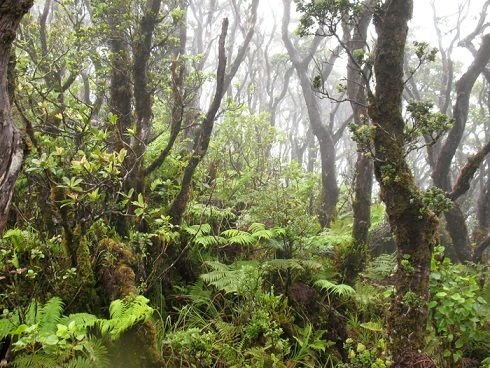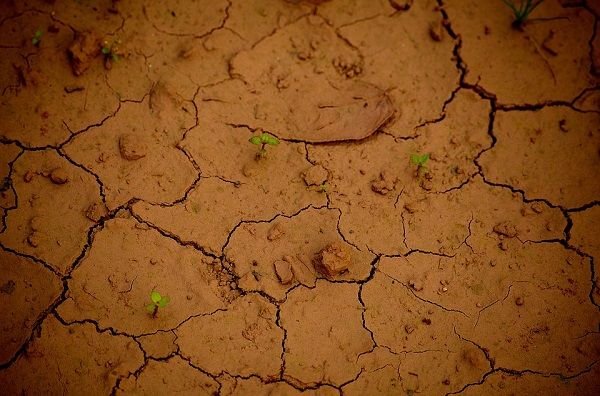
One interesting thing about this steemit platform is that people are online at every point in time throughout the twenty-four hours that make a day. While some are in the morning, some are retiring for the day while some are already snoring in their sleep – time difference! In a similar manner, while some can hardly leave their cribs because of snow, some are enjoying the warmth brought by the sun. Some are experiencing rainfall while some are in dry season. Everything sums up to one thing – season!
Depending on the region of the earth that individual’s country belongs, there are different types of seasons. The regions closer to the equator; that is, the tropical regions experience two main seasons namely; rainy, wet or monsoon season and the dry season. On the other hand, the temperate and the sub-polar regions experience four distinct seasons in a year, namely; spring, summer, autumn and then, winter. Each season are marked by changes in environmental or abiotic factors such as weather, ecology and amount of daylight.

Why do time and seasons differ according to region? Scientists have long given these variations to be due to the movement of the earth around the sun and around its own orbit. Simply put, the variations are caused by the rotation and the revolution of the earth. The earth’s orbit around sun and its axial tilt relative to the elliptic plane are two phenomena that have been studied and found to be responsible for what we know as seasons.
The implication of marked changes to weather, ecology and amount of sunlight received in a region is quite significant in the distribution and abundance of plants, humans and other animals as well as various ecological processes within the biosphere. Water, light, air and several other factors are important in the distribution of plants especially; the daily or diurnal amount of light received by plants have been reported to be significantly important in determining the onset of flowering in plants.
Hence, seasons affect the production of seeds since the development of fruits and seeds is dependent of development of flowers in all flowering plants. If seasons affect seed productions in plants, it is only logical for it will also affect the soil seed bank since the amount of seeds present in a soil at a particular period is a factor of the amount of seeds produced and dispersed by the vegetation, all other factors being constant.
One important indicator of the amount of seeds present in the seed bank of a soil is the seed density. By seed density, we mean the amount of seeds present per square meter of soil. Perhaps this indicator will become more understandable when I am done discussing how to carryout soil seed bank studies in my future posts.
Seasonal variation of soil seed bank
Several Researchers have reported seasonal variation in the seed bank density of different community. In a study of the dynamics of soil seed bank at the North edge of Taklimakan desert in China, it was observed that the soil seed density of each plant species rose to the maximum in November and fell to the minimum in August and the same trend was true in the total seed density. It is lowest in August with 132±8.16 seeds/m2 and rose to the highest in November with 303±12.70 seeds/m2.

A similar research carried out in a gallery forest in Southeastern Brazil found that the number of seeds in the seed bank samples was higher in the dry season than in the wet season. The researchers observed that the seed density varied from 243±87 seeds/m2 in the wet season to 499±40 seeds/m2 in the dry season. In another study of the soil seed bank in four contrasting plantations in Ile– Ife, Nigeria; researchers observed a seed density in the range of 967 – 6,075 seeds/m2 in the dry season while that of rainy season ranged between 1,934 – 6,088 seeds/m2.
In year 2008, Mohammed and Hussein observed a maximum seed density (1052.6 seeds/m2) after rainfall in their studies of temporal and spatial variation in soil seed bank in Elain Natural forest reserve in Sudan. Soil seed bank have dynamics with seasonal and annual fluctuations in composition and abundance resulting from variations in seed production, seedfall, seed mortality, release of seeds from dormancy and seed germination.
Extant vegetation and soil seed bank
Extant vegetation simply means the different species of herbs, shrubs, climbers and trees present in the above ground vegetation of a particular forest. Most methods of studying seed banks requires soil collection on the field and subjecting the collected soil samples to germination experiment under controlled conditions. Thereafter, counting and identification of emerged seedlings are done within a specified period. How similar do you all think the species of the extant vegetation and those that emerged from the soil seed bank of the same vegetation would be? Ordinarily, one would expect it to be high, right? But that is not always the case. A number of researchers have worked on the species composition of seed bank in various forest soils, reporting either similarity or lack of similarity between the species in the soil seed bank and the above ground vegetation.
Sandrine et al. (2006) reported that a total of 34 species were found in the above ground vegetation of which 35% were present in the seed bank. Only 39% of the species present in the seed bank were also a component of the above ground vegetation, thus they concluded that there was no close relationship between the seed bank composition of vegetation of a managed temperate forest ecosystem in Belgium.

Oke et al. (2006) observed that herbaceous species dominated the seed bank of a secondary lowland forest in Nigeria while Mohammed et al. (2008) reported a low relationship between seed density and tree density in Elain Natural Forest reserve. Similarly, Chaideftou et al. (2009) reported that 75% of the species found in the seed bank were observed in the above ground vegetation and that two-thirds of the taxa found in the vegetation did not occur in the soil seed bank of a Mediterranean oak forest in North-Western Greece.
This confirms the generally low similarity between above ground vegetation and persistent soil seed bank flora in forest ecosystem and that the above ground vegetation does not necessarily reflect the soil seed bank composition. If the species in soil seed banks are not similar to those in above ground vegetation, where do you all think the seeds in the seed banks come from?
Thank you for reading.
References
1. Chadieftou E., Costas A. Thanos, E. B., Athanasios K. and Panayotis D. (2009). Seed bank composition and above ground vegetation in response to grazing in sub -Mediterranean oak forests (NW Greece) Ecol. 201: 255- 265.
2. Galindo-Gonzalez, J., Guevara, S. and Sosa, V. (2000). Bat and bird generated seed rains at isolated trees in pastures in a tropical rainforest. Conserv. Biol. 14: 1693-1703.
3. Grombone-Guarantini, M. T. and Rodrigues, R .R. (2002). Seed bank and seed rain in a seasonal semi-deciduous forest in South-eastern Brazil. Journal ofTropical Ecology18: 759–774.
4. Li Ning, Feng Gu and Tian ChangYan, (2007). Characteristics and dynamics of the soil seed bank at the north edge of Taklimakan Desert. Sci China Ser D-Earth Science, 50:122-127
5. Lü, X. T., Yin, J. X. and Tang, J. W. (2010). Structure, tree species diversity and composition of tropical seasonal rainforests in Xishuangbanna, south-west China. Journal of Tropical Forest Science 22: 260-270.
6. Olano, J. M., Caballero, I., Laskurain, N. A., Loidi, J. and Escudero, A. (2002). Seed bank spatial pattern in a temperate secondary forest. Journal of Vegetation Science-13:775–784.
7. Oke, S. O., Oladipo, O. T. and Isichei A. O. (2006). Seed bank dynamics and regeneration in secondary lowland rainforest in Nigeria. Obafemi Awolowo University, Ile-Ife, Nigeria. Int. J. Bot. 2(4):363-371.
8. Mohammed, H. M. and Hussein M. H. (2008). Temporal and Spatial variation in soil seed bank in Elain Natural Forest Reserve North Kordofan , Sudan. Conference on International Research on Food security, natural resource Management and Rural Development
9. Grombone-Guaratini, M. T., Leitão-Filho, H. F. and Kageyama, P. Y. (2004). The seed bank of a gallery forest in southeastern Brazil. Brazilian Archives of Biology and Technology, 47:793-797.
10. Hyatt, L. A. and Casper, B. B. (2000). Seed bank formation during early secondary succession in a temperate deciduous forest. Journal ofEcology, 88:516–527.
All images used are from free sources.
I totally agree with you on;
Well done @gentleshaid
Thank you @masterwriter.
It is amazing how you linked your arguments. It's a respected art and you bossed it. I definitely knew about seasons affecting the distribution and availabiluity of plants. It's nice getting a more detailed insight showing its relation to soil seed bank. I wish my Biology classes helped this much but I guess it's down to more researches.
Thanks @gentleshaid for this.....Now I'm more happy that I reached out to you for a guide - you're the right mentor, your post enough inspires....Keep winning akhee
Thanks for your awesome reviews of this work. We are all still learning while trying to do our best with the little knowledge that we have. I will be happy to do whatever I can to assist, although I am sure we will end up learning from each other.
Yes. We all learn everyday. Thanks for the kind gesture.
Good morning. @pangoli referred me to you. How do I join the discord group for steemstem as how can I get tutorials on how to write on steemng? Thank you Sir
Here is the link to steemstem discord group. Everything you need will be attended to within the channel. See you there!Good evening @aniesta.
good job thanks for sharing :)
you are welcome
This is really educating, well done. I have learnt a lot from this
Thanks ma. We all learn everyday as far as Steemit is concerned
This is one of the reasons I believe in steemit. A lot of credible writings -from credible people. And are never out of season!
Thanks brother. Steemit is an awesome place to learn cool things, especially science. I believe in this project too
opps! by the way I'm a sister😊
Ok sis. :)